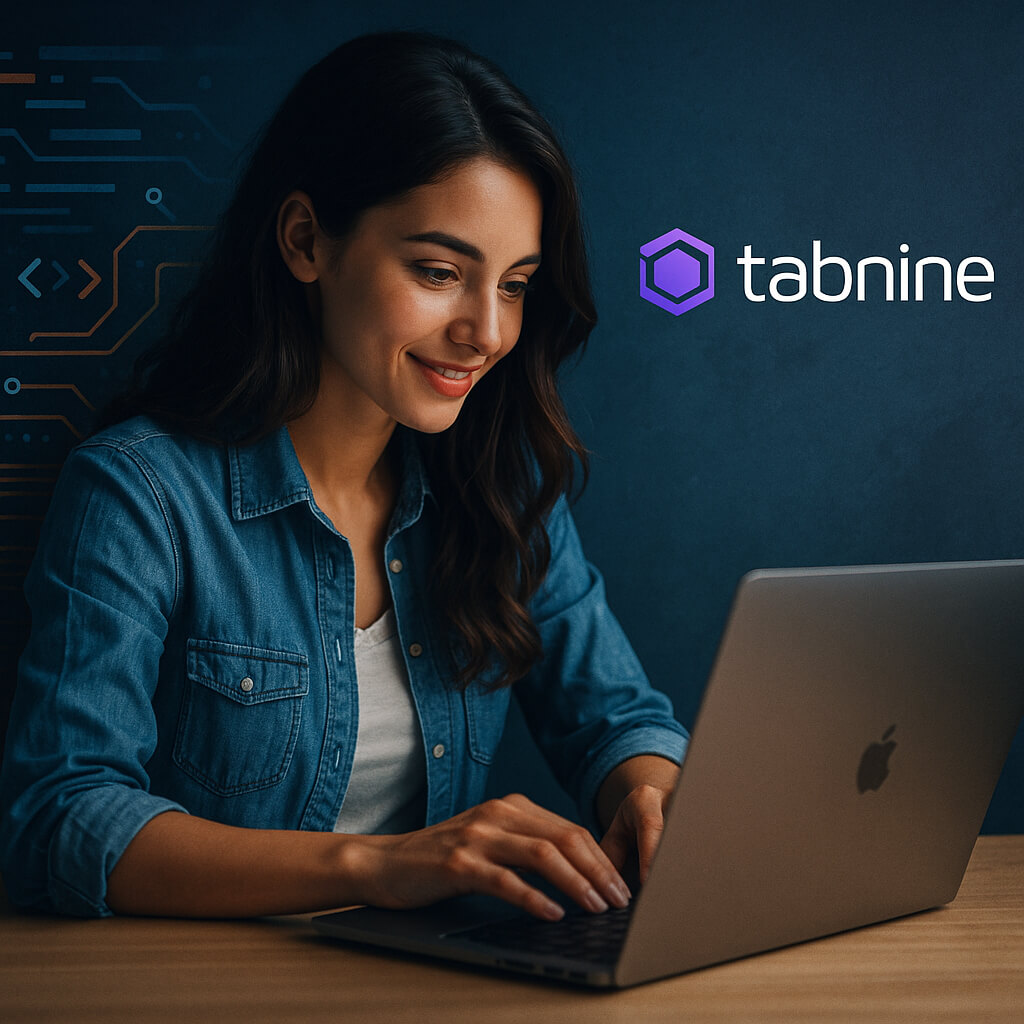Tabnine does not wait for your next line. It guesses, proposes, and sometimes finishes your thoughts before you have even formed them. That is its promise: predictive coding that adapts to your habits without asking too much.
But in a world where every AI assistant claims to make you faster, a better question is: does Tabnine help you think better?
A partner that anticipates your flow
You type half a pattern, and Tabnine completes it with uncanny precision. It recognizes your logic, follows your rhythm, and integrates into your IDE with zero friction. Whether you are building across frontend, backend, or cloud environments, it feels like an invisible collaborator that learns fast.
But when things get too smooth, reflection can slip. That is something we explore deeper in our article on AI as a thinking partner. Because sometimes, less friction means less awareness and less learning.
Slippery ground: When speed becomes sleepwalking
There is a hidden danger in frictionless coding. You move faster, but do you understand more?
Tabnine can accelerate execution, but real progress comes when you challenge its suggestions not just accept them.
This mindset shift is essential for today’s full-stack developers. As detailed in our strategic guide on the evolving dev role, the top devs in 2025 are not the ones who finish first. They are the ones who design better and debug less because they think sharper.
How smart devs use it without autopilot mode?
- Compare Tabnine’s output with your own mental model. Ask: is this what I would have written?
- Use its suggestions to test edge cases you would not have caught otherwise.
- Prompt intentionally. Do not wait for help ask proactively and with structure.
“Productivity without clarity is noise. Predictive tools must serve design, not replace it.”
Use tabnine in 5 minutes:
- Install the Tabnine extension from its official page.
- Launch your current project and start coding naturally. Let Tabnine observe.
- When it suggests a completion, stop. Read it slowly. Would you refactor it? Why?
- Try: “Suggest alternative loop pattern with better performance.”
- Repeat the process, and begin saving the best prompts in your personal playbook.
4. Deepening your use of Tabnine: The role of intent:
Even though Tabnine is powerful, it doesn’t replace the developer’s intent. What you choose to do with its suggestions defines the value you get from it. That’s why the most skilled developers don’t just accept completions they analyze, question, and refine them.
4.1. Coding with awareness: Every suggestion is a hypothesis
Think of every line that Tabnine generates as a hypothesis, not a final solution. This mindset changes how you read code. You’re no longer a passive operator approving suggestions; you’re an architect actively shaping the logic of your application.
Here are a few strong questions to ask when faced with a Tabnine suggestion:
-
Does this completion meet my readability standards?
-
Does it truly align with the business logic I’m targeting?
-
Is it consistent with the patterns I use across this project?
When you take this reflective stance, every coding session becomes a mental workout. Tabnine isn’t just an autocomplete tool anymore it becomes a mirror to your thinking process.
4.2. The productivity illusion: Avoiding passive completion
One danger of tools like Tabnine is falling into what we might call “passive mode.” You code fast, but without mindfulness. You keep accepting completions without slowing down to think.
This is where real productivity collapses. On the surface, it looks like you’re delivering more. But underneath, you’re understanding less. Long term, this erodes your ability to maintain, refactor, or scale complex systems.
4.3. Turning Tabnine into a growth engine
So how do you use Tabnine to actually improve your technical skills? Here are some practical tactics:
-
Create micro-challenges: Take a Tabnine suggestion and find at least two alternative implementations. Compare them in complexity, performance, and clarity.
-
Keep a prompt journal: Track which prompts lead to your best completions. Study what makes them work.
-
Revisit your past sessions: Open code you wrote with Tabnine a week ago. What decisions would you change today? Why?
This kind of practice not only strengthens your control over Tabnine, but more importantly, sharpens your understanding of the code you write. That’s what it means to code intelligently never fully outsource your thinking to the machine.
-
Final note: Stay curious, stay in control
Tabnine works best when you are awake. Not just typing but analyzing.
If you stay sharp, it becomes an amplifier. If you disengage, it becomes a shortcut that weakens your edge.
That is why Tabnine offers a dedicated partnership program perfect for devs who want to promote it authentically without buzzwords. Smart tool, smart rewards.
Have you tested Tabnine in your stack?
What surprised you or what didn’t feel right?
We are building this space for devs who ask better questions. So leave a comment, share a prompt, or challenge the concept. That is how we grow together.

